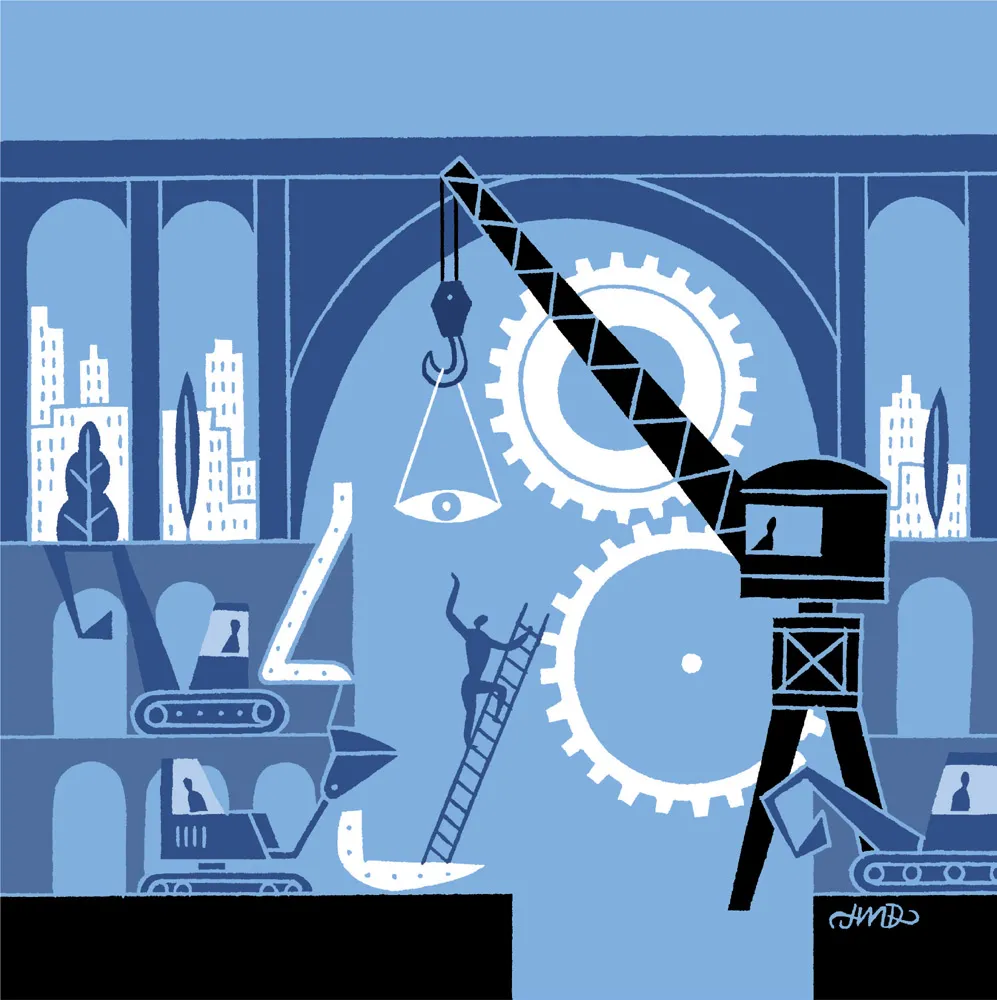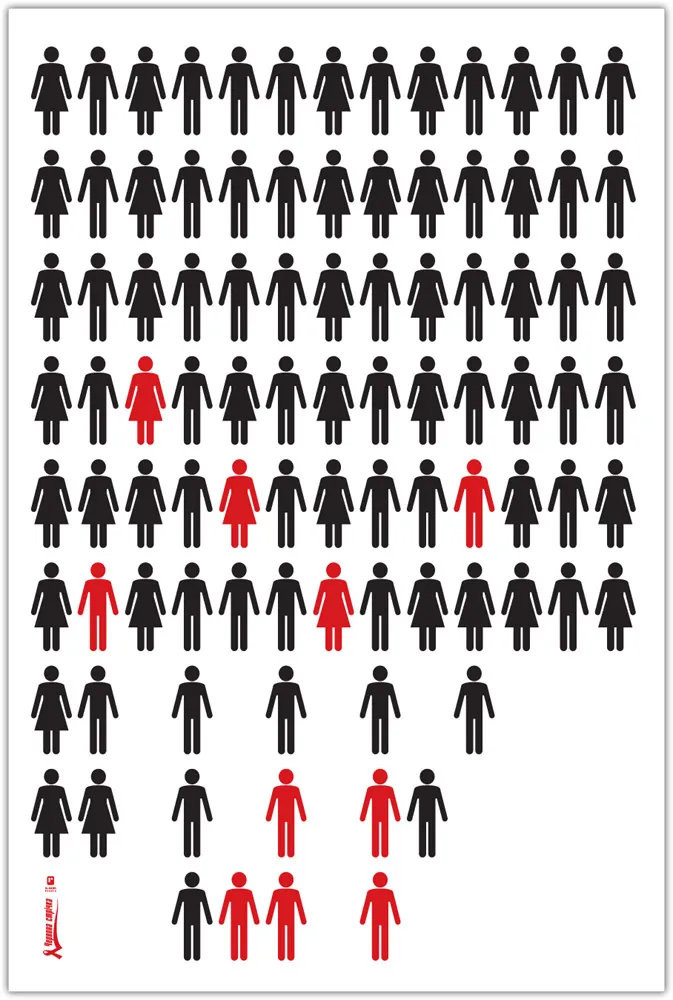SECTION TWO
THE PRINCIPLES
1: Organize for Perception
2: Direct the Eyes
3: Reduce Realism
4: Make the Abstract Concrete
5: Clarify Complexity
6: Charge It Up
“For design is about the making of things: things that are memorable and have presence in the world of mind. It makes demand upon our ability both to consolidate information as knowledge and to deploy it imaginatively to create purpose in the pursuit of fresh information.”
KROME BARRATT, Logic & Design in Art, Science & Mathematics
Jean-Manuel Duvivier, Jean-Manuel Duvivier Illustration, Belgium
PRINCIPLE 1
ORGANIZE FOR PERCEPTION
“Vision is not a mechanical recording of elements, but rather the apprehension of significant structural patterns.”
RUDOLF ARNHEIM, Art and Visual Perception
Our visual system is remarkably agile. It helps us perform tasks necessary for survival in our environment. Yet we are able to apply these same processes to perceiving and understanding pictures. For example, without conscious effort we scan our surroundings to extract information about what is “out there,” noting if there is anything of importance in the environment. Similarly, without conscious effort we scan a picture to acquire information, noting if there is anything of importance in the visual display. All of this occurs effortlessly, before we have consciously focused our attention.
The processes associated with early vision, called preattentive processing, have generated a great deal of research that can be applied to graphic communication and design. By understanding how viewers initially analyze an image, designers can structure and organize a graphic so it complements human perception. The goal is to shift information acquisition to the perceptual system to speed up visual information processing. This is equivalent to giving a runner a head start before the race begins.
Our visual intelligence enables us to see the word museum in this poster, which is constructed using straight lines and three simple colors.
Boris Ljubicic, Studio International, Croatia
Early vision rapidly scans a wide visual field to detect features in the environment. This first phase of vision is driven by the attributes of an object (the visual stimulus), rather than a conscious selection of where to look. Upon detecting the presence of visual features, we extract raw perceptual data to get an overall impression. This data is most likely “mapped into different areas in the brain, each of which is specialized to analyze a different property.”1 From this rapid visual analysis, we create some form of rough mental sketch or representation.2
Later, vision makes use of this representation to know where to focus our attention. It is under the influence of our preexisting knowledge, expectations, and goals. For example, using the low-level visual system of early vision, we might register the shapes and color features we see in a graphic. Later, vision directs our attention to those same features and uses knowledge stored in long-term memory to recognize and identify the shapes as people. These two stages of vision form a complex and little understood interaction that provides us with a unique visual intelligence.
Parallel Processing
The initial visual analysis of preattentive processing is rapid because vast arrays of neurons are working in parallel. We typically detect features with low-level vision at a rate faster than ten milliseconds per item.3 To better understand the parallel nature of early visual processing, search for the red symbols in this AIDS awareness poster (next image). Rather than perform a serial search through every single figure in the graphic, our low-level visual system immediately perceives the red figures among the field of black ones. These features tend to pop out and grab our attention.
Designed as a pictograph, this poster conveys the loss of life from AIDS by taking advantage of our ability to quickly detec...




